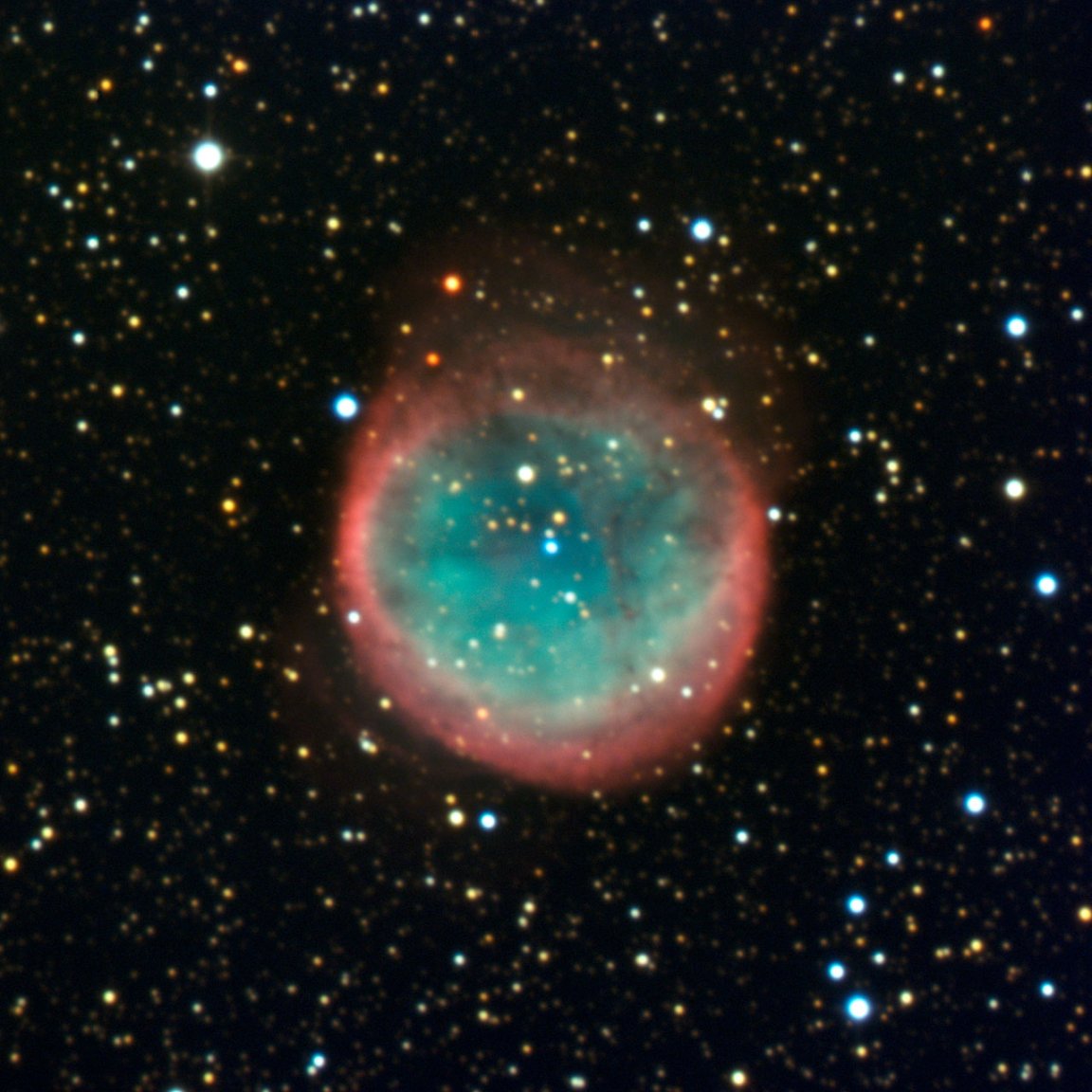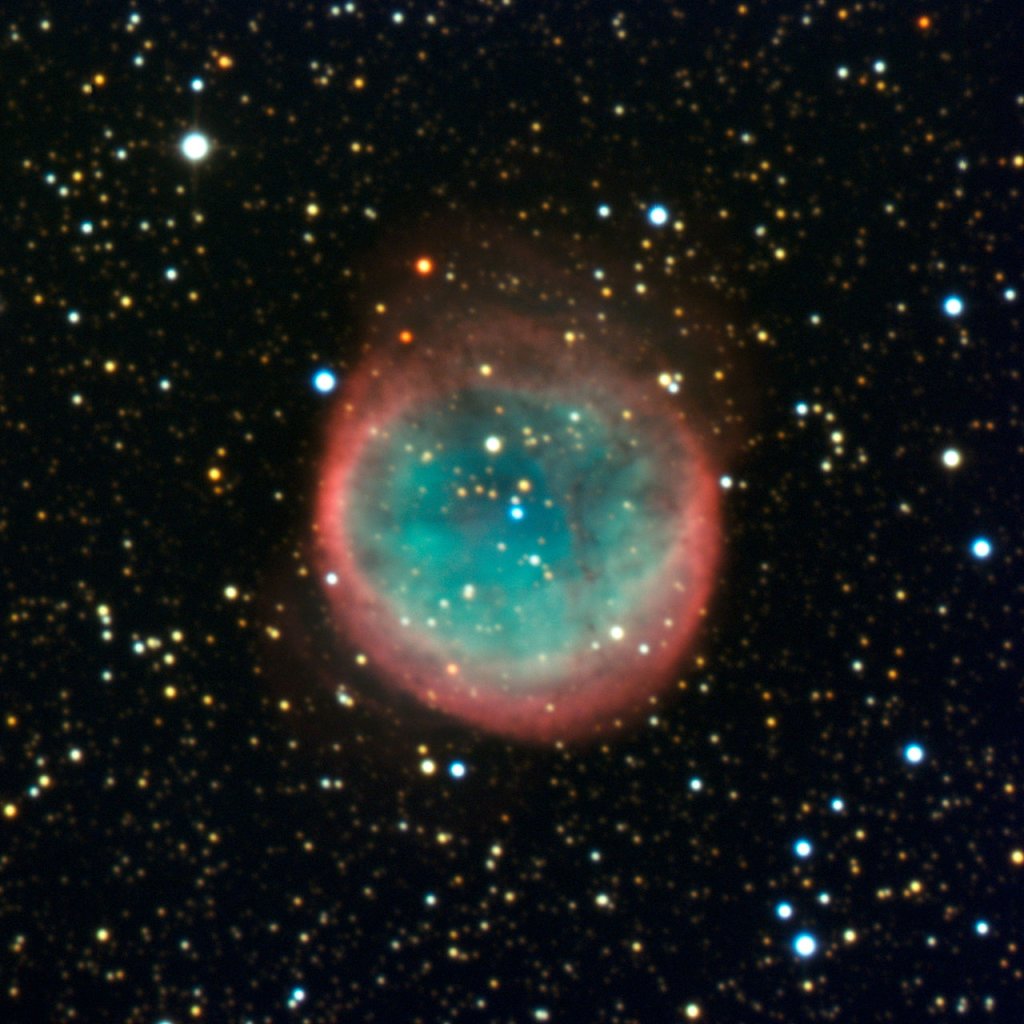

NGC 6781 is a lone bubble drifting through space a few thousand light-years from Earth (within the constellation of Aquila).
Of course, it’s not a bubble, but from a cosmic perspective, it is just as fleeting. Instead of being forged from soap, this object was formed by a Sun-like star that once exhausted its fuel supply and bloomed into a red giant, before it ultimately shed its gaseous envelope.
Eventually, these stars create planetary nebulae, which shine brightly for a time, partially thanks to the tiny remnant the stars leave behind—called white dwarfs.
Overall, NGC 6781 spans around 2 light-years across. This image of it was captured using the ESO’s Faint Object Spectrograph and Camera (EFOSC2). They explain the nebula’s distinct layered look:
Within NGC 6781, shells of gas blown off from the faint, but very hot, central star’s surface expand out into space.
These shells shine under the harsh ultraviolet radiation from the progenitor star in intricate and beautiful patterns. The central star will steadily cool down and darken, eventually disappearing from view into cosmic oblivion.
(See a larger image here.)